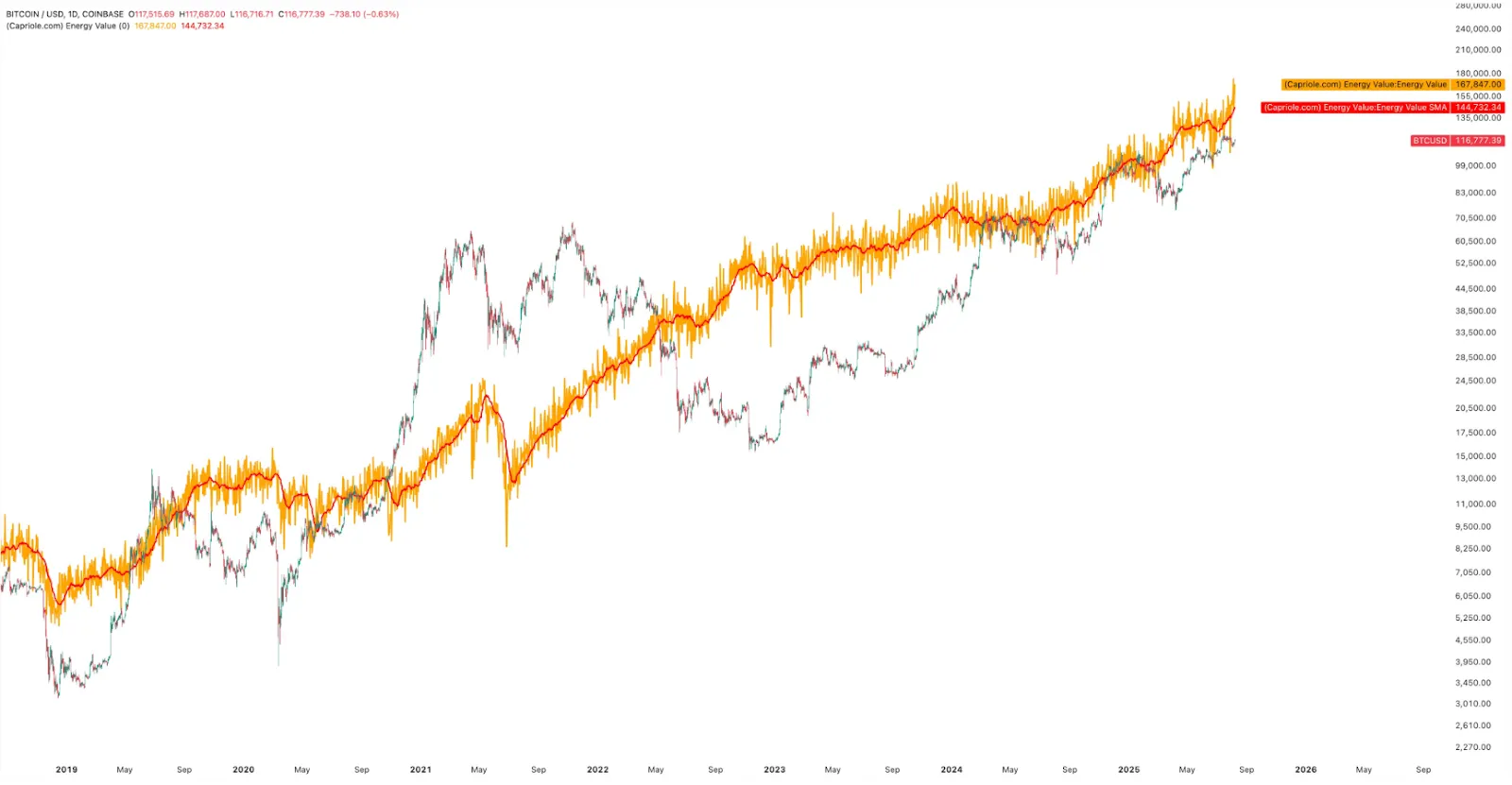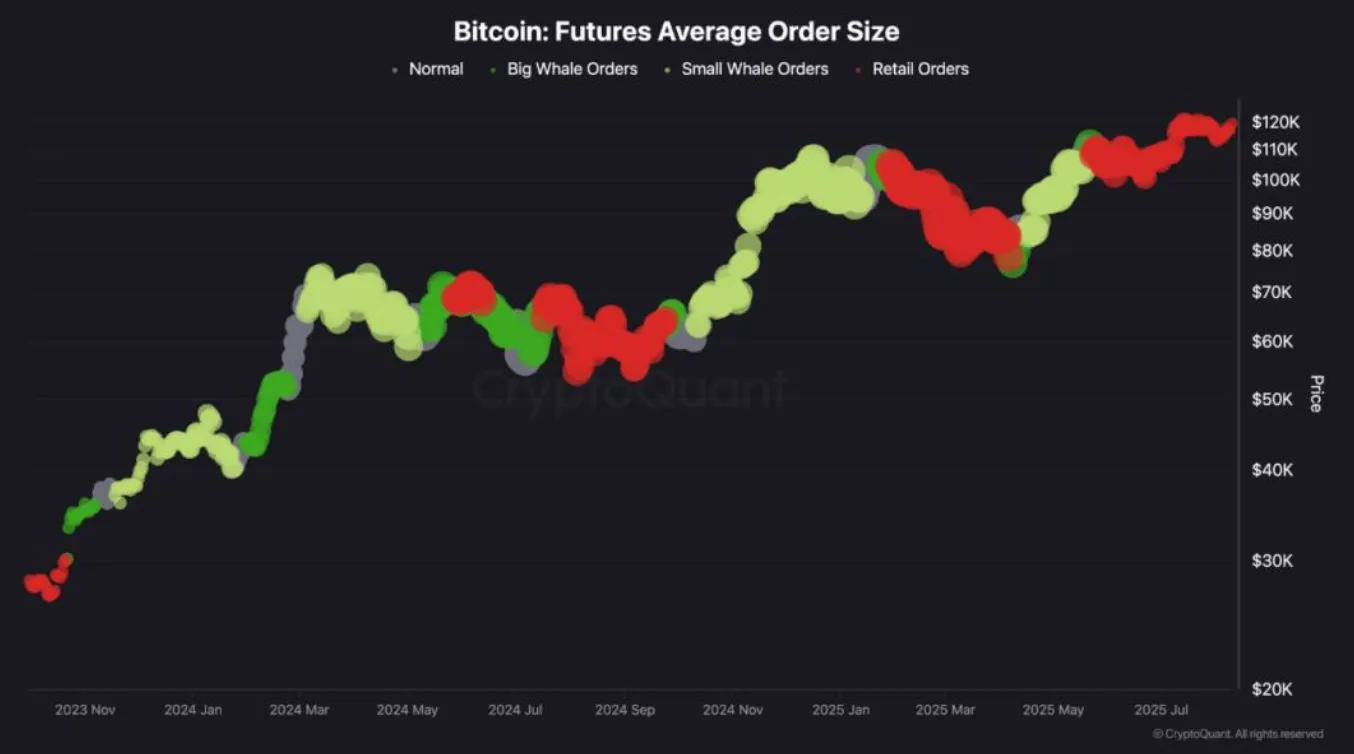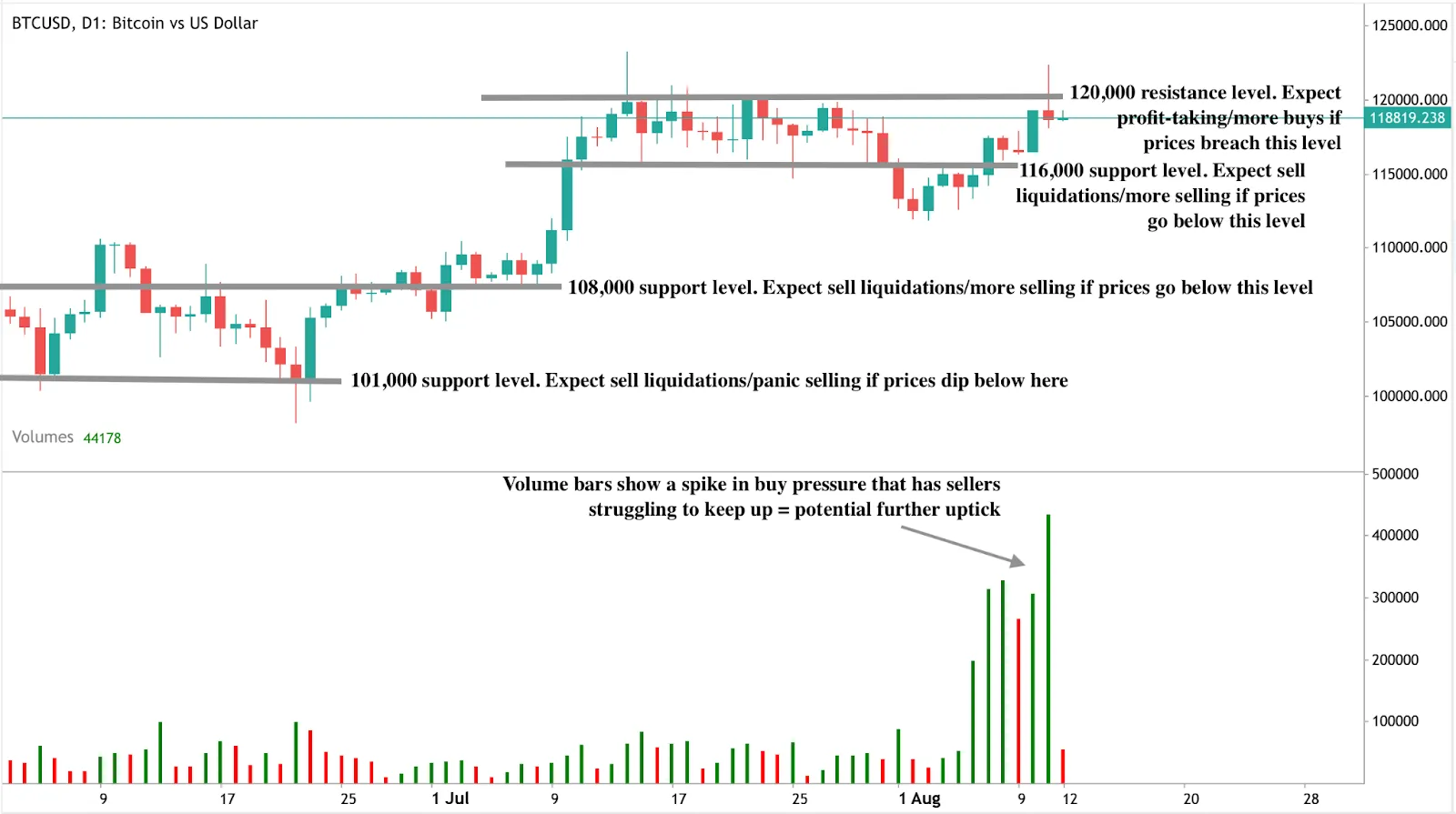Why the Bitcoin price at 118K may be cheaper than it looks

Bitcoin has pulled back to around 118,800 after briefly breaking above 122,000 earlier this week. While some traders see this as a sign of short-term exhaustion, key valuation metrics suggest the market may be underpricing the asset’s long-term potential. The most notable of these is Bitcoin’s Energy Value - a network-based valuation framework that now puts BTC’s fair value between 145,000 and 167,800. That means Bitcoin is trading at a 31 percent discount to the energy it consumes to sustain its decentralised network, a dynamic not seen since the 2020 pre-bull run phase.
Key takeaways
- Bitcoin’s Energy Value has reached as high as 167,800, while the market price has pulled back to 118,800
- BTC is trading at a deeper discount to value now than it was at 10K in 2020
- On-chain data shows retail traders dominate recent flows while institutional whales sit out
- Hash Ribbon and hash rate data suggest miners remain confident
Bitcoin is trading below its energy-based valuation
The Bitcoin Energy Value model, developed by Capriole Investments, estimates BTC’s fair price based on the energy expended to secure the network. This model views Bitcoin like a commodity, where energy input serves as a proxy for value. According to recent calculations, this metric now ranges between 145,000 and 167,800 - significantly higher than current spot prices.
Charles Edwards, founder of Capriole, has pointed out that Bitcoin is now at a greater discount to its Energy Value than it was in September 2020, when it traded at just 10,000. That historical moment preceded a multi-month rally to new all-time highs.
Today, that discount is just as striking. According to Edwards, with hash rates soaring, the Energy Value’s simple moving average sits at $167,800 - placing Bitcoin roughly 31% below its estimated fair value. It’s a level of undervaluation that echoes past setups before major bull runs.

While past performance isn’t a guarantee, the current discount reflects a rare deviation between market price and network fundamentals. It signals an undervalued condition that could invite renewed buying interest if momentum returns.
Institutional interest remains selective
Despite clear signs of undervaluation, institutional flows remain measured. While ETFs and corporate treasuries like MicroStrategy still hold substantial Bitcoin reserves (MicroStrategy alone holds over 628,000 BTC), there’s little evidence of aggressive buying into this recent pullback.
On-chain data reinforces this view. Execution size data shows an uptick in small-lot trades, suggesting that recent activity has been retail-led.

In contrast, previous major rallies were often marked by an increase in large-lot orders, consistent with whale or institutional accumulation.
This implies that institutions are waiting on the sidelines, likely seeking technical confirmation. A decisive close above 125,000 could re-ignite their interest. Until then, the current structure resembles a market in transition - strong underlying value but cautious capital deployment.
Miners show resilience despite volatility
Bitcoin’s hash rate remains near all-time highs, indicating robust miner engagement. This suggests confidence in the network’s long-term viability. More notably, the Hash Ribbons indicator flashed a “Buy” signal in late July - a historically reliable marker for potential upside.

The premise behind the Hash Ribbons model is straightforward: when short-term hash rate drops below the long-term average and then recovers, it signals miner capitulation followed by recovery. In past cycles, this shift often preceded multi-month rallies. The recent signal suggests that miners are not only weathering volatility but actively recommitting resources.
Miners increasing their energy input further supports the upper band of the Energy Value model, creating a compelling narrative that current market prices undervalue the network’s operating fundamentals.
What the shift to retail means for price action
The rising presence of retail-sized orders suggests a speculative environment, often characterised by short-term momentum trading and emotional swings. Historically, phases where retail dominates and institutional players remain passive tend to generate heightened volatility.
However, analysts note that this isn’t necessarily a bearish signal. If institutional investors believe retail traders are building a solid price floor, they could re-enter the market aggressively - especially if macroeconomic conditions turn supportive. Potential Federal Reserve rate cuts in September, for instance, may act as a catalyst for renewed sentiment and capital inflows.
Bitcoin technical analysis
At the time of writing, BTC is seeing a significant pullback from its recent upmove, with sellers attempting to push the price down toward the 118,000 mark. However, volume bars show a noticeable spike in buy pressure, with sellers offering limited resistance. This indicates that if sellers fail to follow through with conviction, Bitcoin could bounce back in the short term.
A rebound from current levels could meet resistance around the 120,000 mark, which now acts as a short-term ceiling. On the downside, a deeper correction could find support at 116,000. In a more bearish scenario, stronger support levels sit at 108,000 and 101,000, which align with previous consolidation zones and psychological levels.

These technical levels, when combined with undervaluation signals from the Energy Value model and miner confidence indicators, provide a framework for assessing short-term risk and longer-term opportunity.
Frequently asked questions
Why is Bitcoin’s Energy Value relevant now?
Because it highlights that the network is consuming more energy to secure itself than what the market currently values it at. This discrepancy often precedes upward price adjustments.
Are institutions still buying?
Yes, but cautiously. Most large players are holding from lower levels, and there’s little evidence of aggressive buying into this pullback.
Is miner behaviour supportive of current prices?
Yes. The hash rate is rising, and Hash Ribbons have turned positive, indicating miner confidence and a reduced risk of forced selling.
What would trigger further upside?
A decisive break above 125,000 could shift market sentiment and invite institutional re-entry, especially as macro tailwinds (like expected Fed rate cuts) remain in play.
Investment implications
Bitcoin’s pullback to 118,800 may be offering a value entry point rather than signaling the end of the rally. With the asset trading well below its network-derived fair value and miners showing no signs of stress, the setup resembles early-stage momentum phases rather than distribution tops.
If institutions resume buying above 125,000, this dip may be remembered as a strategic accumulation window. The energy value gap, supported by resilient miner behaviour, makes Bitcoin’s current price potentially more attractive than it appears on the surface.
Disclaimer:
The performance figures quoted are not a guarantee of future performance.



